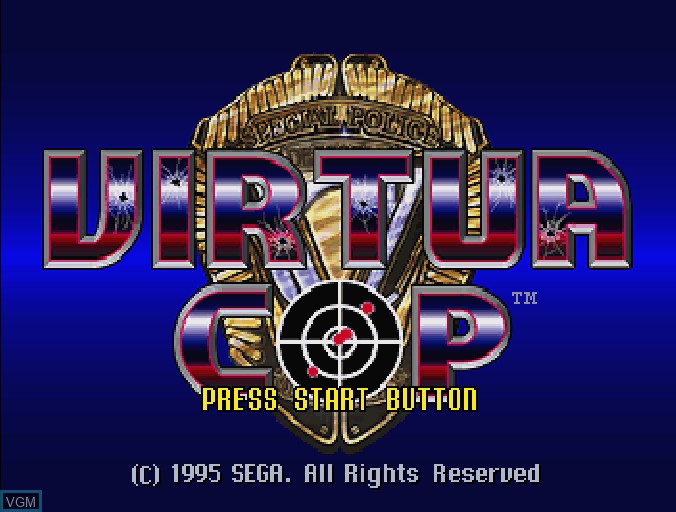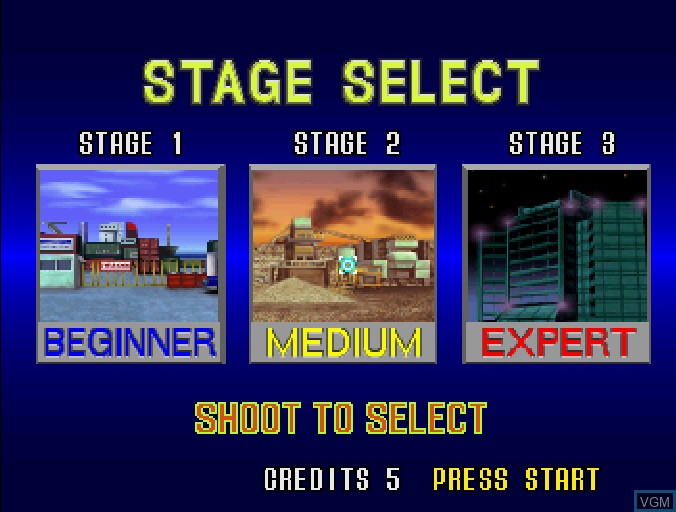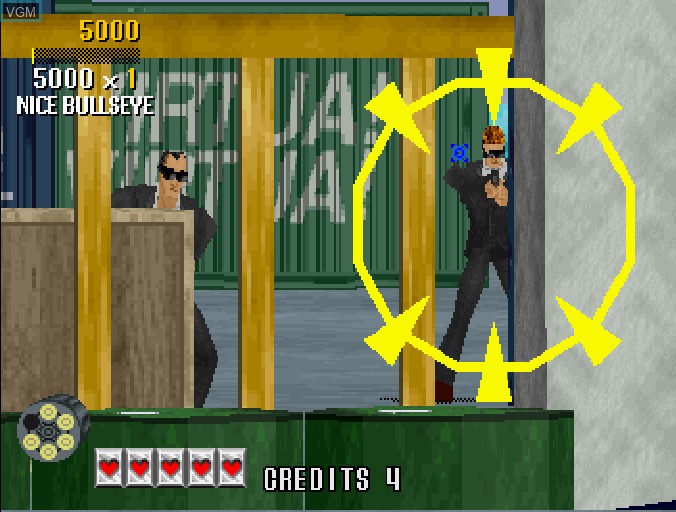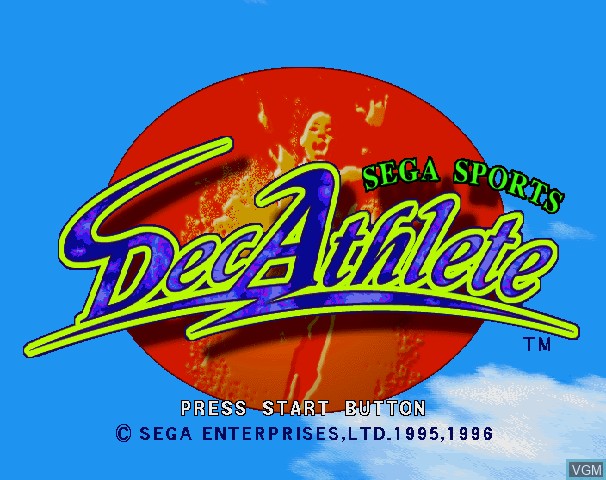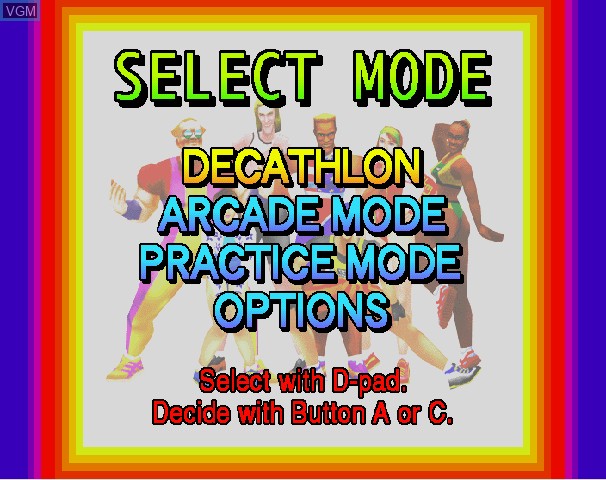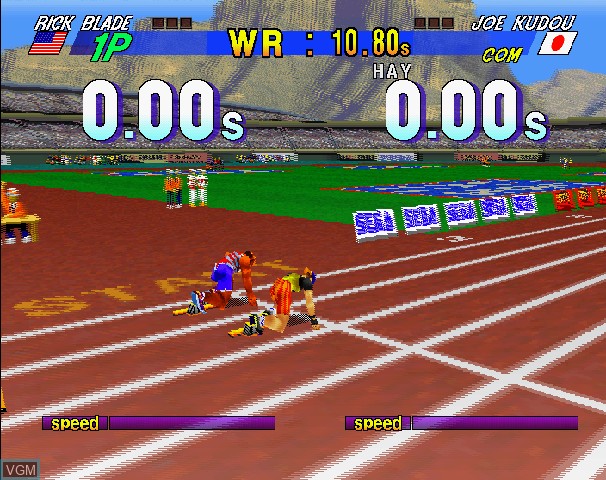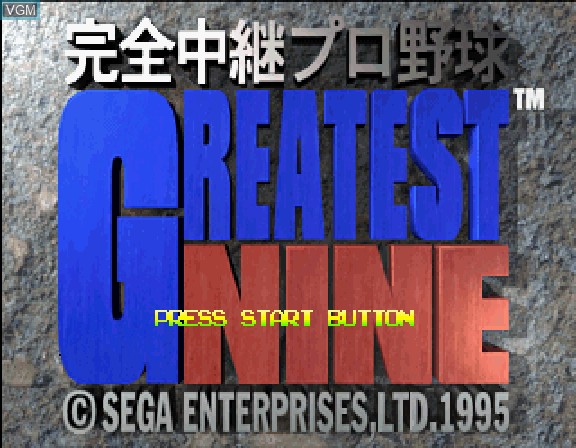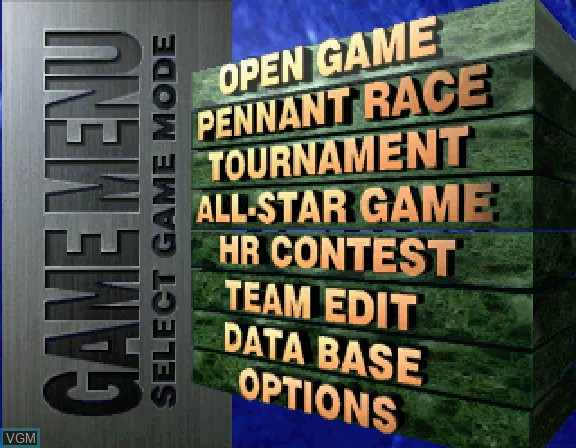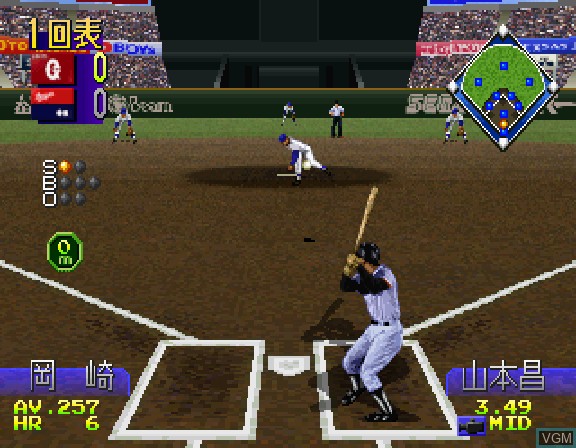Virtua Cop
Gameplay
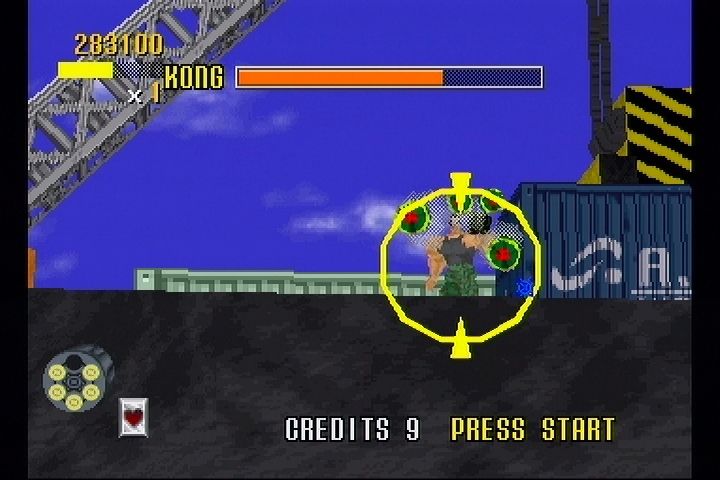
Virtua Cop (バーチャコップ) is an arcade shooter game created by Sega AM2 for Sega Model 2 hardware in 1994. It is the first in the Virtua Cop series. It was one of the first light-gun games to take place in a 3D world, as the first light-gun shooter to use 3D polygons. Sega advertised it as the "world's first texture mapped, polygon action game".
Players assume the role of a police officer - either Michael Hardy, or his partner, James Cools. Played from a first person perspective view, the players must use the light gun to take down the multitude of sharp shooters who come for them. At the start of the game, the player is armed with only a pistol, but more powerful weapons, such as machine guns and shotguns, can be obtained as they progress. These weapons are hidden in breakable objects such as crates, and can be extremely useful when trying to take on the customary end-of-level bosses. There are penalties for shooting civilians.
Virtua Cop was notable for its use of polygonal graphics, which were subsequently used in both House of the Dead and Time Crisis, instead of the two dimensional sprites that were popular for previous games in the same genre. It is also notable for being one of the first games to allow the player to shoot through glass. The game's realistic graphics earned it the "Virtua" title, along with other 3D Sega games such as Virtua Fighter, Virtua Striker and Virtua
Decathlete
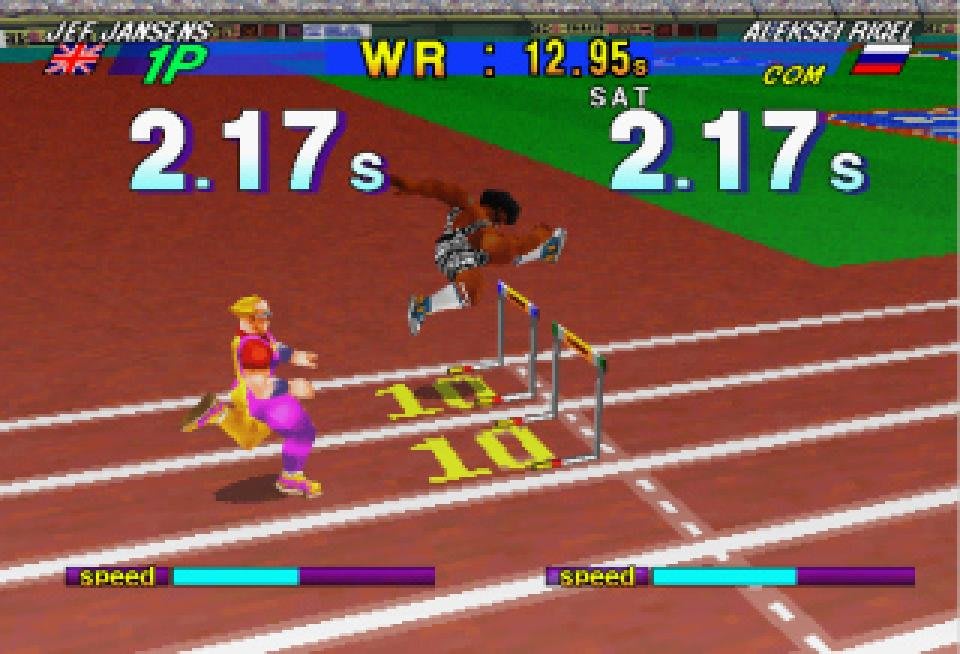
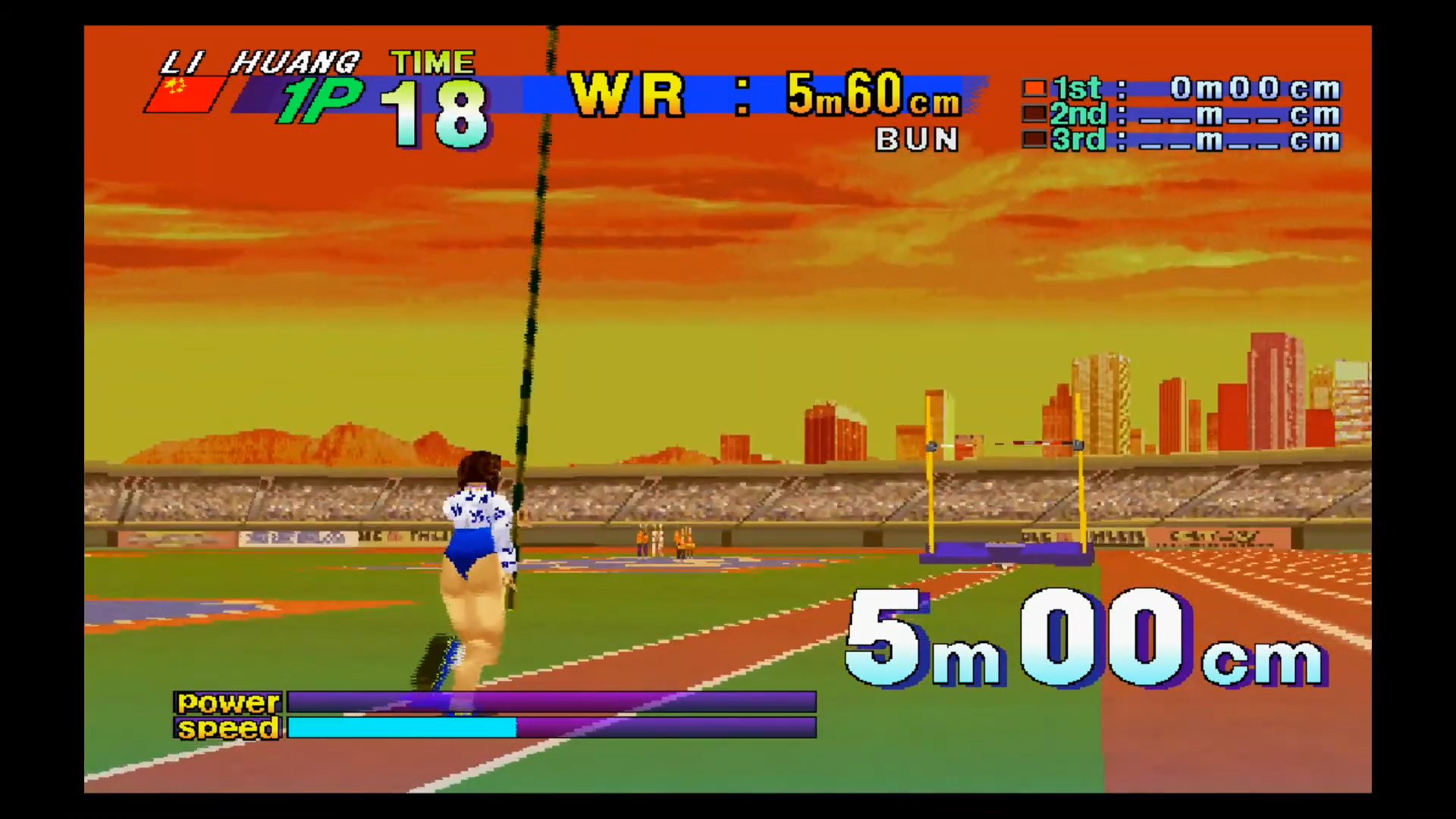
As the non-European name suggests, the game features all the events of the decathlon, including the 100-metre dash, long jump, shot put, high jump, 400-metre race, 110-metre hurdles, discus throw, pole vault, javelin throw and the 1500-metre race, and not only was one of the first games to feature all of these sporting events, was the first to present them in 3D.
The overall gameplay is largely based on quick, repeated button pressing for gaining speed, and timed single button presses for jumping and releasing projectiles, in a similar style to the 1983 Konami arcade game, Track & Field. The game differed with a slightly more advanced control system and 3-D graphics.
The player must select one of eight fictional international athletes. In the arcade version, the player competes in ten traditional decathlon events: 100 metres, Long jump, Shot put, High jump, 400 metres, 110 metre hurdles, Discus throw, Pole vault, Javelin throw and 1500 metres. Also in the arcade version, the player is required to meet a minimum set time, height or distance to qualify for the next event. The home console versions allow the player to compete in a full decathlon featuring all ten events without qualifying limit. Despite a potential for multi-player gaming, the game is limited to two players at a time. In a one-player game, the player competes against only one other character from the list of playable characters. The only exception to this is in the 1500 metres, where six other generic athletes join the race as well.
Kanzen Chuukei Pro Yakyuu Greatest Nine
Gameplay
Virtual On Cyber Troopers
Gameplay
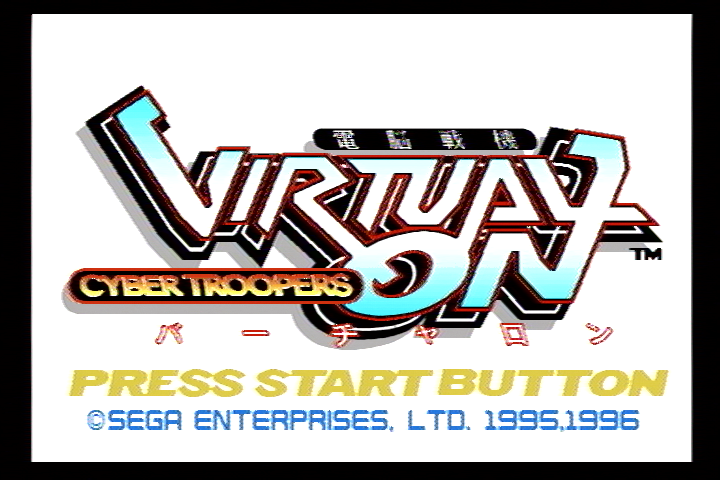
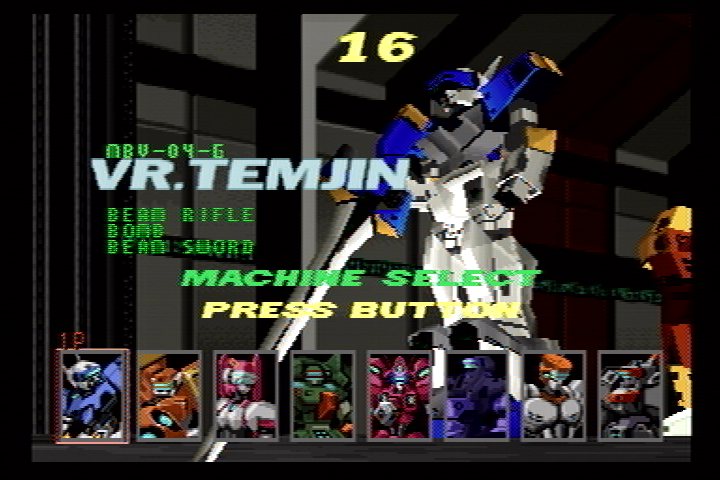
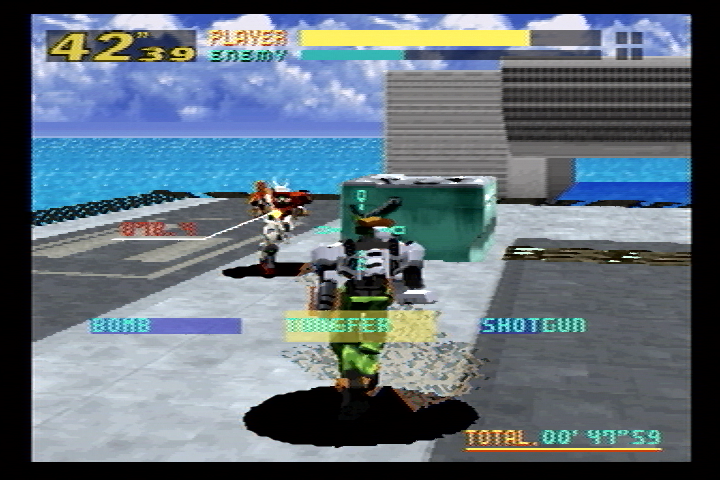
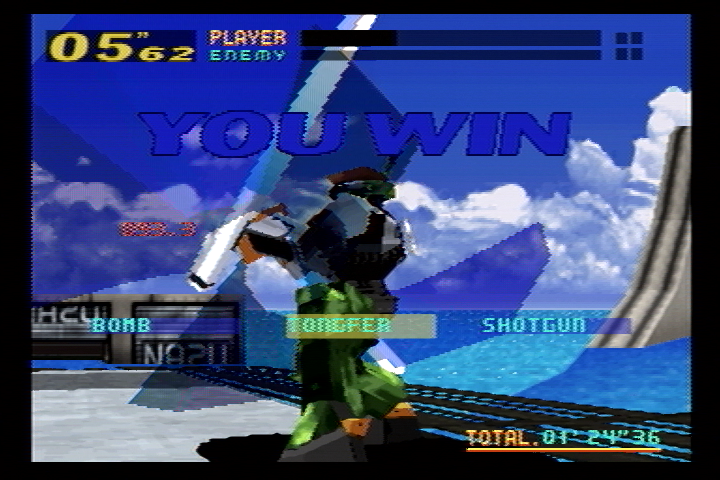
Virtual On is set up similar to a Versus fighting game. Two virtuaroids (Mecha) face each other on a stage. The player(s) use a variety of firearms, explosives, melee weapons, and other techniques to destroy the enemy for a set number of rounds, usually a single battle, or best two out of three rounds, like fighting games.
The game is made to be played with a two-joystick setup, known as the twin-sticks. Each stick is equipped with a trigger and a button on top of the stick.
The twin sticks control the virtuaroid on screen much like a bulldozer. Pushing or pulling both sticks in one direction makes it move in that direction, while pushing one stick forward and pulling the other back makes it turn in the forward direction. Pulling the sticks apart causes the virtuaroid to jump into the air, and automatically turn to face the opponent. Pulling them towards each other while pulling a trigger causes the virtuaroid to prone while firing.
The top buttons are Turbo buttons. Pressing a Turbo button while moving causes the virtuaroid to dash for a few seconds. Dashing is used to avoid enemy fire, or to maneuver quickly around the map. Virtuaroids can fire while dashing. While dash-firing, as with during a jump, the virtuaroid turns to face the enemy before shooting.
Each virtuaroid is armed with three weapons, which are different for each virtuaroid. Two of those weapons are associated with either the left or the right trigger, and are referred to as the Left Weapon (LW) and Right Weapon (RW) respectively. The Right Weapon is generally a Virtuaroid's main weapon, usually a rifle or gun. The Left Weapon is commonly a support weapon, often an explosive. Left weapons usually have a blast radius and can inflict splash damage even if they miss the target directly. The third weapon is called the Center Weapon (CW), and is activated by pulling both triggers simultaneously. Depending on the selected virtuaroid, a Center Weapon attack can be extremely powerful, but can only be used a few times in a row before they run out of energy. Each weapon's size, power, and rate of fire is varied by the virtuaroid's actions when the player pulls the trigger. For example, a standing Temjin's RW is a single shot from its rifle, but while dashing, the RW unleashes a rapid burst of shots at once. While dashing, the virtuaroid's direction may also have an effect on the attack.
